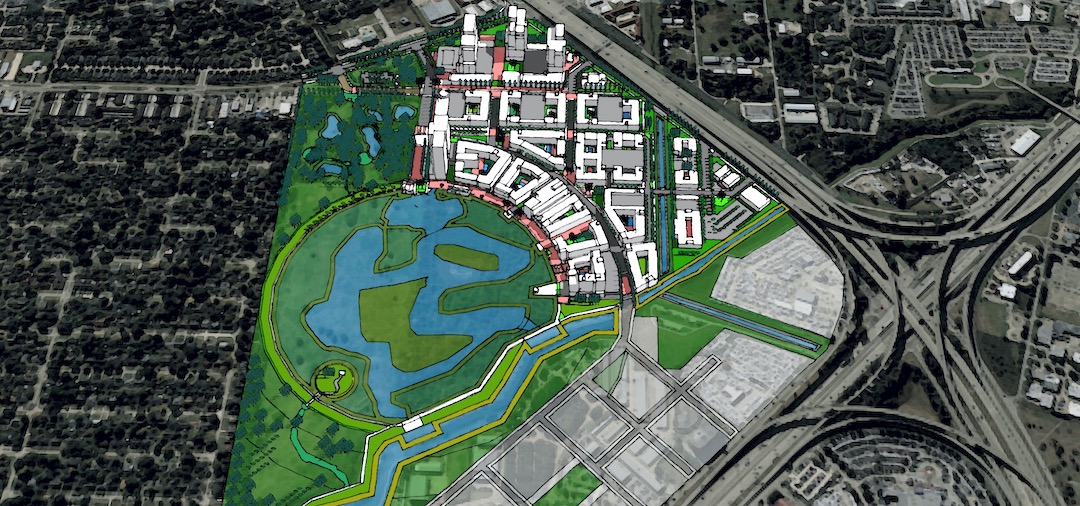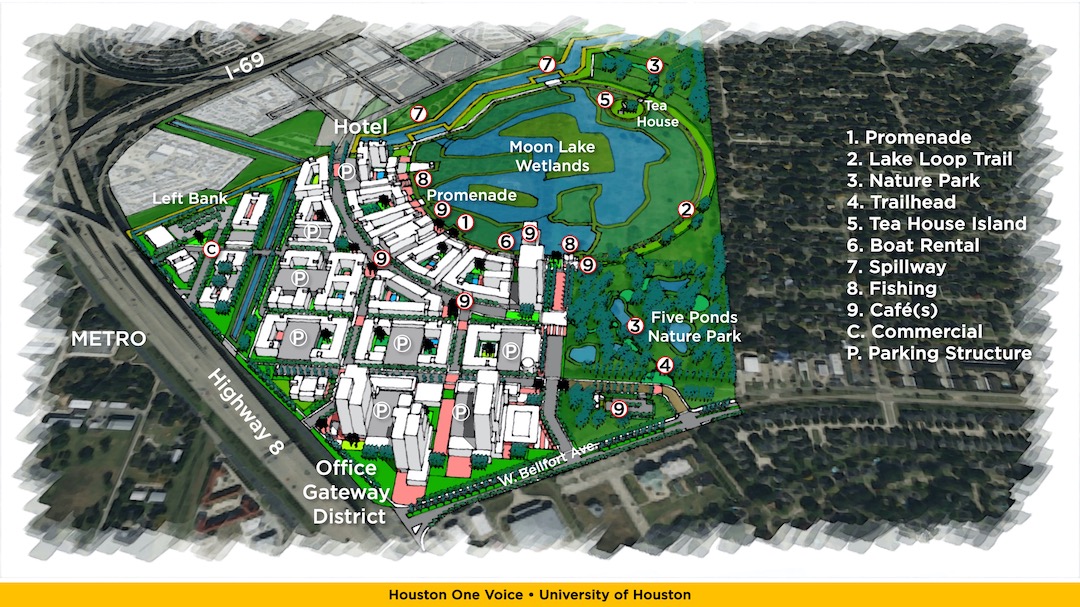Public officials, too, gave the proposal a ceremonial boost last summer with a City Hall proclamation meant to bring awareness to people, places and events that positively contribute to Houston’s economic, social and cultural fabric.
Despite the acclaim, it could take years for this vision for the former landfill along the southern bank of Keegans Bayou to be realized — if it ever is at all.
The city of Houston recently paid $10.5 million for about half of the 143-acre site near the intersection of I-69 and Beltway 8 and is hoping to acquire the rest of it in the near future for what it’s calling the Ruffino Stormwater Detention Project.
“We’ve always, in my office, envisioned this to be a regional detention facility … possibly integrating wetlands and park amenities in the future,” said Stephen Costello, Houston’s Chief Recovery Officer.
The Ruffino Stormwater Detention Project would be located in the 9700 block of Ruffino Road on the site of a municipal landfill, which closed in the early 1980s and was later a golf course. A transfer station is currently housed on a portion of the site.
But as the city works toward its goal, another group sees a different path forward — one that takes into account the site’s economic development potential.
Houston One Voice, a nonprofit formed to bring awareness to the mixed-use proposal, believes a public-private approach combining development income with detention funding could be a more feasible solution.
The nonprofit, along with the University of Houston, completed a study and master plan for the site outlining options to redevelop the landfill site into a combined town center and flood control facility. The report was commissioned by the Southwest Houston Redevelopment Authority with funds from the area’s tax increment reinvestment zone (TIRZ #20).
The project would act as a catalyst for new development while protecting area residents and businesses with needed stormwater detention, according to the report. It covers almost half of the needed detention for Keegans Bayou, which feeds into Brays Bayou.
“This study was a new way of looking at the property that really could be a transformation and a revitalization of this area of town,” said Michael Bercu, co-founder of Houston One Voice.
Located near the intersection of I-69 and Beltway 8, the Ruffino Hills landfill site is in Brays Oaks, originally part of the ranch owned by oil tycoon Walter Fondren. Builders developed residential subdivisions in the area in the 1940s and later added apartment complexes and strip centers. In the 1980s-era oil bust, property values began to fall and the apartment complexes deteriorated.
Brays Oaks was further impacted by Hurricane Harvey.
“In an area that felt a tremendous impact from Hurricane Harvey and the severe storms that came before it, the Ruffino Stormwater Detention Project will bring flood mitigation to protect more than 1,300 homes and businesses in Southwest Houston,” Mayor Sylvester Turner said in a statement.
The city acknowledges the steep cost of the detention plan. It recently applied for a state grant to help pay for the estimated $96 million project. The Texas Division for Emergency Management recently sought bids for some of the $650 million it received from the Federal Emergency Management Agency for hazard mitigation as a result of COVID-19.
The city partnered with the Harris County Flood Control District in its application, which includes channel improvements to Keegans Bayou along with regional detention. The funding is based on a 75% federal and 25% local cost share.
The state is still evaluating its call for projects, Costello said. “They advised me they had over 300 applications for funding.”
Costello said he’s been eyeing the old landfill site for several years.
He first looked into the possibility of mining the land for recyclables, but the Texas Commission on Environmental Quality (TCEQ) said the landfill was too old for any recycled materials to be salvaged.
The city then needed to make sure the site didn’t contain any hazardous materials so the waste could be relocated to make way for the detention project. Testing revealed no hazardous materials, Costello said, and the city is now preparing to file for a permit from the TCEQ that’s required before moving the waste.
If Houston is successful in its plan for the site, it would end decades of uncertainty and legal woes over Ruffino Hills.
After Bellaire leased a portion of its property for a garbage transfer station in 1999, area residents formed a coalition to fight the transfer station and later filed a lawsuit against the TCEQ in relation to the station’s permit.
Over the years, West U and Bellaire considered selling the site, believing that future development could prove to be a source of income for their cities.
In 2007, as both cities continued to explore options for their respective acreage, West U’s city manager asked the city of Houston if it would be interested in the property for a park, but no deal was made.
Costello said the recent move to acquire West U’s tract was because other developers were interested in buying it.
“When we found out, the mayor reached out to the mayor of West U and said, ‘We want that property,’” Costello said.
Bruce Race, an architecture professor at the University of Houston who worked with students on developing the master plan for Houston One Voice, said the public-private scenario can be a “generational opportunity” to transform a former landfill site while balancing the community need for stormwater detention, economic development and recreation. The proposal could create 1,800 jobs and provide housing for 6,700 residents at the site, according to the report.
“If you start to think about these projects as being more collaborative efforts between the city and county and private sector, you can start building projects that provide the kind of regional detention we can't afford otherwise,” Race said.
He said the city could lease portions of the land to developers, or they could sell property with the proceeds going toward underwriting detention and park space.
Building on old landfill sites is not a new idea, Race said, citing a large project near Levi’s Stadium in Santa Clara.
“These are underutilized assets,” he said.
Nancy Sarnoff, a longtime Houston business and real estate journalist, is a contributor to the Urban Edge.


